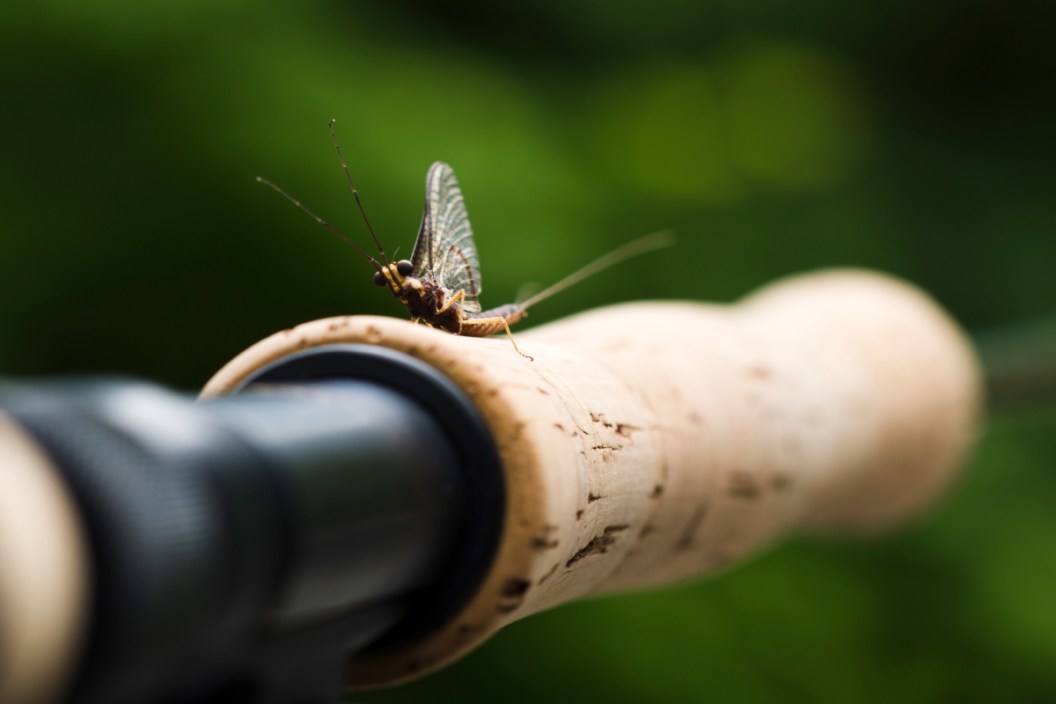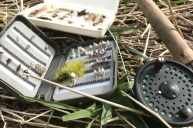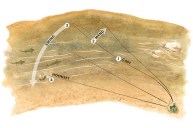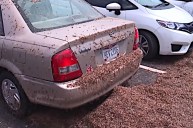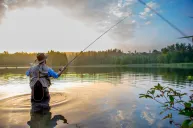Fishing insect hatches can be one of the most successful ways to fill your creel.
The epic thing about hitting a hatch of insects at the right time is the fact that the trout and other fish concentrate themselves to an area, and leave their normal caution to the wind. This gives fly anglers a distinct advantage over them, at least for the time being.
Maybe the most common misconception for novice trout anglers comes from the mistaken notion that trout only eat the adult insects, or the flies that are most easily seen. Some of the best trout offerings we know of are some of the smallest which need the lightest tippets and the most deceitful presentations.
But the best part of all this is the fact that, during and epic hatch, trout will let their guard down, chow down, and end up down in the bottom of the net. Here are a few great videos from Orvis featuring Tom Rosenbauer that will help to tell the tale.
Tom Rosenbauer has a great remark in the opening of the video above by saying, "Entomology has scared more people away from flyfishing than anything except knots." Hatches change with the season and it helps to know a little about the life cycles of each insect. It's worth noting, to be successful, a trout angler doesn't need an advanced degree.
Mayflies
It is said that may fly hatches are the most important, bar none to fishing, but others may disagree. This is simply a long standing piece of the trout fishing puzzle mostly depending on your location.
These profoundly important insects live most of their lives underwater as larva, then nymph, until they are ready to break the surface as a dun. Once they've successful breached the water and reached the safety of the trees, they will become a spinner, or full-fledged adult.
These bugs are near the absolute bottom of the food chain. When mayflies both hatch and return to lay their eggs trout and other fish species will have a field day feeding on them. At this time fish that are normally easily spooked can be approached with less stealth making them easier to target.
Caddisflies
Caddisflies are also a very important trout food at their hatch. They have a somewhat different lifecycle since some forms of the larva construct cases around themselves with gravel, sand, and plant material.
The pupae of these insects also emerge from the water at the surface, but struggle more so to do it than mayflies. This means that they are easy targets for fish at the stage making a hatch very approachable.
One major difference is that caddisflies can live much longer out of the water in their adult stage before returning to lay their eggs. As stated in the video, they form large groups that appear as another hatch, but they are really just migrating upstream.
When these flies return to the water to mate, lay eggs, and die is when the trout feed on them heavily, since they are now in reach of the fish.
Stoneflies
These similar, but differing insects have yet another dissimilar lifecycle in that they live for long periods underwater as a larvae, but they do not visit and emerge from the surface. Instead, the stonefly meanders its way to stream side edges where they hatch outside of the water.
This makes them less than available to trout, except for the fact that they are lousy fliers and need to return to the water to lay their eggs. In both cases, this makes them active targets for trout.
Midges
These much more diminutive insects may seem so small that a trout could never care to take the energy to feed on them, but don't let their size fool you. Starting as a worm-like larvae, midges proceed to the pupae stage where trout gobble them up.
Their smaller size can be a detriment as they can have trouble even launching as they emerge in windy conditions. Add to this the fact that they return to the water to mate and lay their eggs. As a result, many die in rather large numbers, the midge hatch found at the right time can be hugely successful.
Fishing Trout During a Hatch
It's a fact of fishing life: the fish just won't always respond the way that we expect on certain days. Fortunately, sometimes we have to fight them off with a hammer when the bite is on, and that can happen often during an insect hatch.
Trout, in particular, begin the feeding process closer to the bottom where the nymph pattern rules. After that, when the larvae begin to make their rise to the water's surface, hang on to your rod because trout will likely be targeting them just under the surface. Fly anglers should be constantly on the lookout for fish that may seem to be feeding on the surface, but are actually intercepting pupae as they break for the top.
The height of any hatch comes when fish are most actively feeding at all levels, in particular at the surface. This is when they lose their natural fear, and simply begin to gobble everything that looks like prey. In some cases, trout may prefer the emergers more than any other part of a hatch since the insects can struggle to break free of the water's skin and remain on top as easy targets for a longer period of time.
Probably the next best time to target trout is when the spent and dying flies return to the water's surface to lay their eggs and die in the natural process.
Top 10 Trout Flies
These are just a few of the best flies to consider when an insect hatch is happening. These flies are specifically designed to mimic the insects we mentioned earlier in all their different stages.
Some of these can be expensive to purchase. Fortunately, most are easy to make, even for novice fly tying enthusiasts. There's something that's even more rewarding about catching a fish on one of these patterns that you've tied yourself.
- Black Wooly Bugger
- Parachute Adams
- Copper John Nymph
- Kaufman Stimulator
- Pheasant Tail Nymph
- Zebra Midge
- Sulphur Sparkle Dun
- Blue Winged Olive (BWO)
- Elk Hair Caddis
- Black Foam Beetle
Don't forget to use your powers of observation while fishing. It's not a bad idea to have a good pair of polarized sunglasses to help you observe what the hatch is and where the fish are feeding. This will help you select the right fly for the situation.
The Last Word
Remember to consult the hatch chart for your area as this will help a fly fisherman to select the proper fly patterns. Hatching flies don't always mean success, but knowing what they are and when they tend to emerge is the beginning of knowledge for fly fisher everywhere.
The life cycle of aquatic insects from subsurface to adult can make the difference between whether you are dry fly fishing or streamer fishing, and choosing the right fly makes the choice more important.
It also doesn't hurt to talk to your local fly shop before you head out. The men and women who work at these places follow the hatches closer than anyone else and they want to see their customers find success. In fact, they should be able to provide you with the right mayfly nymph, and emerger patterns. They'll also be able to advise the best adult insect presentation to tackle any trout stream near you.
Insect hatches may seem a little intimidating to understand at first. However, with a little time and research, you'll be able to take advantage of these key times to fish like the pros.
Looking for a new way to display those antler sheds? Go to Rack Hub and use the coupon code Craiger. Be sure to follow my webpage, or on Facebook and YouTube.
NEXT: WINTER TROUT FISHING: HOW TO FIND SUCCESS IN THE COLDEST OF SEASONS
WATCH
